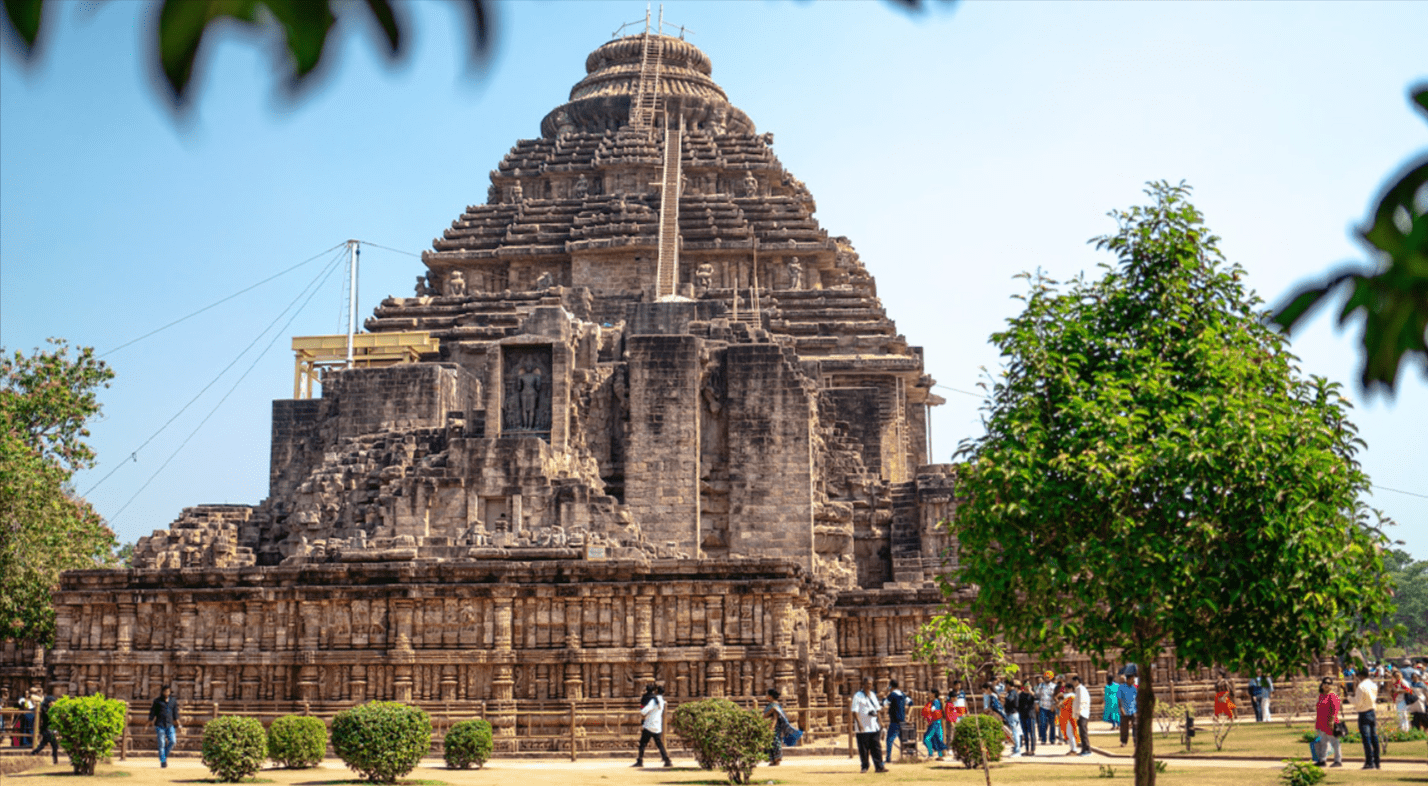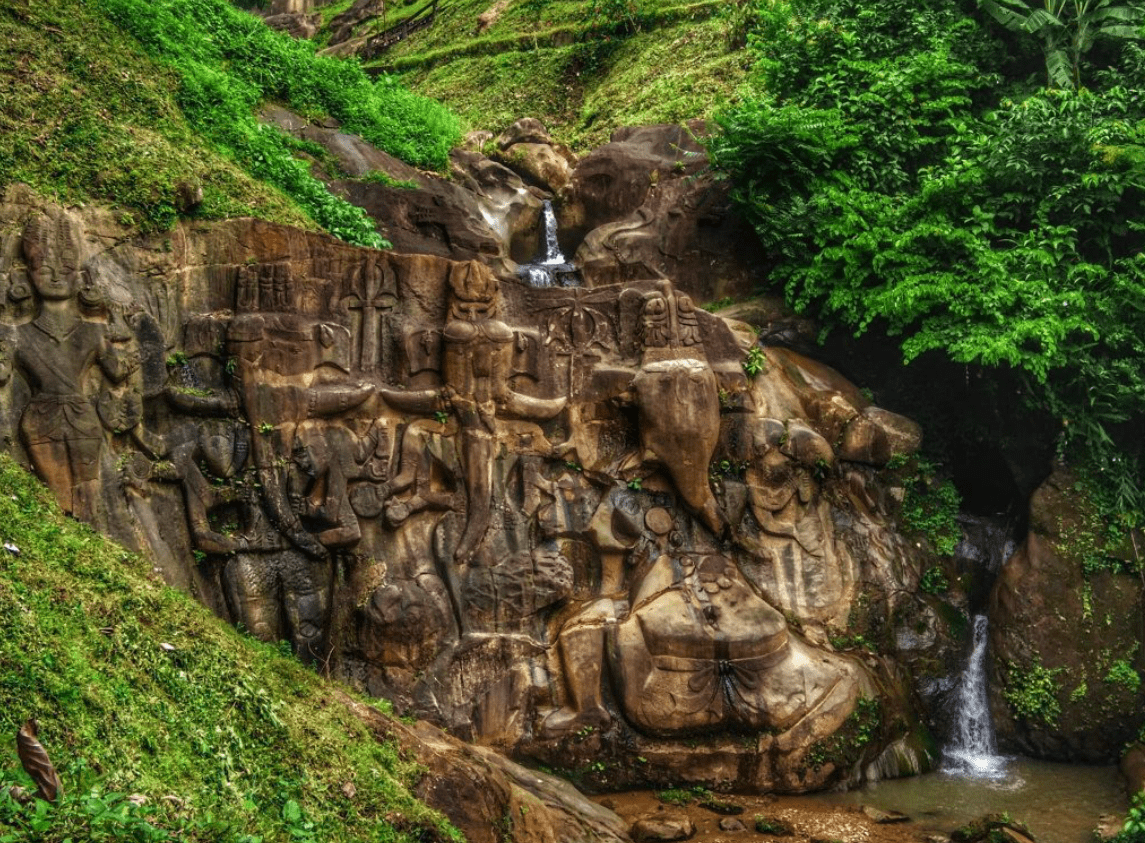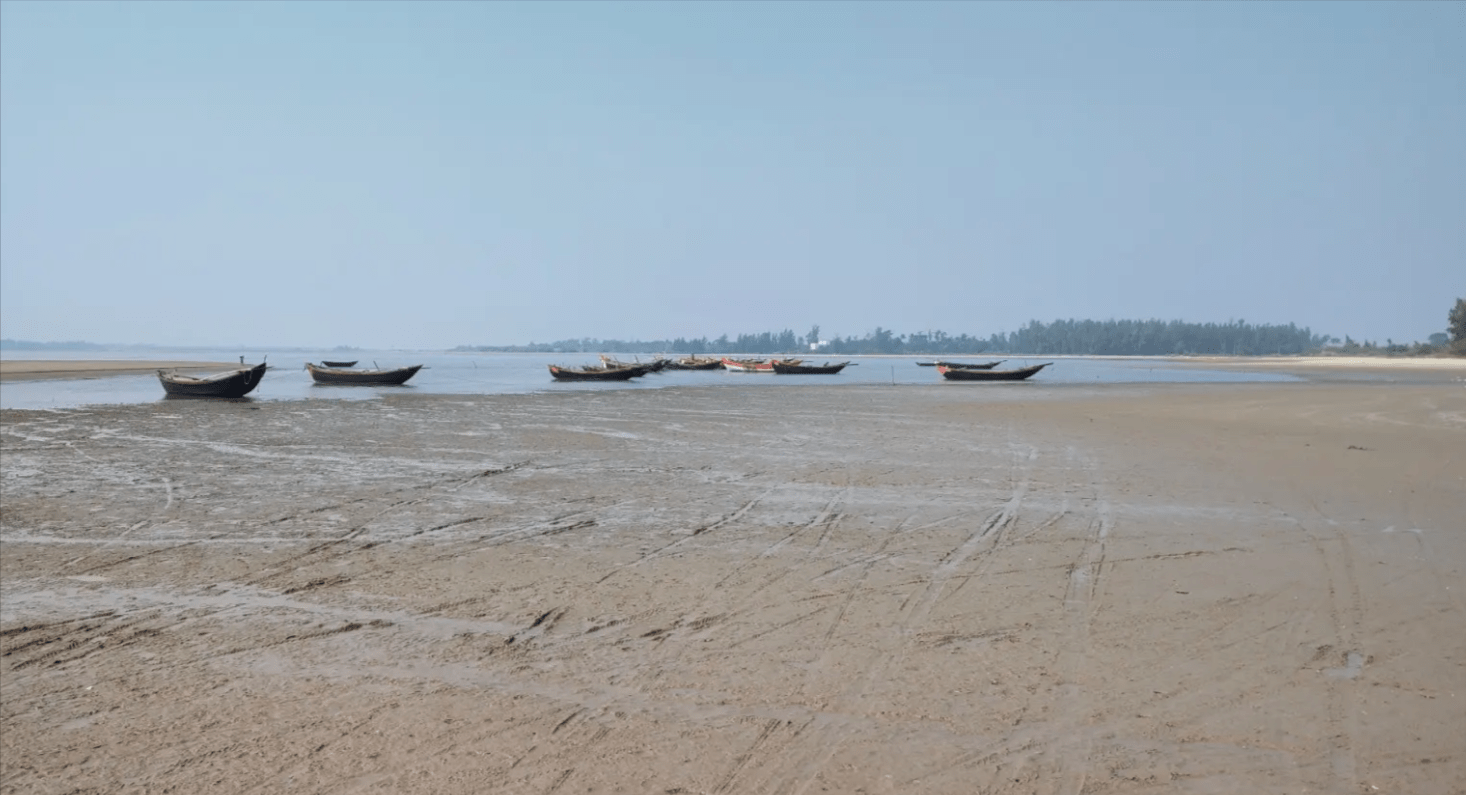A remarkable feat achieved by 1200 master craftsmen over 12 dedicated years, the Konark Sun Temple stands as a timeless masterpiece. Built in the mid-13th century under the reign of King Narasimha Deva I of the Eastern Ganga Dynasty, this architectural marvel is located in the serene town of Konark, Odisha, along the eastern coast of the Bay of Bengal. During our exploration of Odisha’s Diamond Triangle, we took the opportunity to visit both Konark and Puri.
Architecture of the Konark Sun Temple
Designated as a UNESCO World Heritage Site, the Konark Sun Temple is constructed in the form of a grand chariot, poised as if ready for its first journey. The temple was created in honor of the Sun God, whom King Narasimha Deva I devoutly worshipped. The Sun God is imagined to be seated within the “Garbagriha,” or inner sanctum, steering the chariot. This massive chariot is drawn by seven horses and features twenty-four wheels, with each horse symbolizing a day of the week and each wheel representing the hours of the day.
Three types of stones, primarily black in color, were used in the temple’s construction. Originally, the Konark Temple served as a navigational beacon for ships in the Bay of Bengal, earning it the nickname “Black Pagoda” among sailors.
Like many ancient temples, the Konark Sun Temple is adorned with intricate and fascinating carvings. Our guide explained that of the seven horses, three are positioned on the left side and four on the right. This uneven distribution is said to make the chariot move faster on one side, symbolizing the Sun’s circular journey.
As we circled the temple, performing the parikrama in sync with the Sun’s movement, we admired the detailed carvings and sculptures, eventually coming across the Sun God’s idol.
We were eager to enter the main temple to view the central idol, which is rumored to float mid-air within the sanctum due to the use of magnets and metals. There is a tale that some ships near the Konark Temple were wrecked by the magnet’s force. While we cannot verify this story, we hope it’s just a myth, as it would be disheartening to think such a beautiful structure had a destructive side.
Unfortunately, the main entrance of the temple has been sealed for many years, and it is believed that the magnet has been removed, with the deities relocated elsewhere. Our guide mentioned that the temple would collapse if the doors were not sealed. Though we found this hard to believe, it’s evident that neglect of historical sites often leads to their gradual decline.
Legend and Fables Behind the Konark Sun Temple – The Story of Dharmapada
Ancient monuments often come with their own myths and legends, and the Konark Sun Temple is no exception. A particularly poignant legend tells the story of a brilliant 12-year-old boy who sacrificed his life to save 1200 craftsmen.
King Narasimhadeva envisioned a grand temple dedicated to the Sun God near the sea (which, at that time, was much closer to the temple). Master architect Bisu Maharana was entrusted with this grand project, and it was during this time that his son Dharmapada was born.
Dharmapada was an exceptionally gifted child with a natural inclination toward art, craft, and architecture, likely inherited from his father. Despite his knowledge, Dharmapada had never met his father, who was away working on the temple. On his 12th birthday, Dharmapada asked his mother to take him to meet his father, a request she finally granted.
When Dharmapada arrived at the temple site, he was awestruck by the grand structure and thrilled to meet his father for the first time.
At that time, the temple was still incomplete, with 1200 artisans working tirelessly but unable to place the Kalasa (cupping stone) atop the temple. After 12 years of construction, the King had set a strict deadline for the temple’s completion, threatening to execute all the craftsmen if they failed. This left Bisu Maharana and his workers deeply distressed.
Sensing his father’s concern, Dharmapada asked to be taken to the top of the temple. Drawing on his knowledge from his father’s manuscripts, he found a solution to the problem. Overjoyed, Bisu Maharana and his son worked together to successfully place the Kalasa at the temple’s peak by dawn, saving countless lives.
However, whispers soon spread that the King might not be pleased to learn that a 12-year-old had completed the temple. Saddened by this, Dharmapada, with a pure heart, climbed to the top of the temple and, as the sun rose, jumped from the Kalasa he had just placed, sacrificing his life to protect others. Dharmapada’s brilliance and sacrifice remain legendary in Konark and Odisha.
Erotica and the Konark Sun Temple
The Konark Sun Temple is well-known for its erotic sculptures, which are prominently displayed at eye level in the middle section. These explicit depictions of amorous unions range from easily interpretable to more controversial scenes.
The temple’s carvings even depict homosexuality, lesbian love, and interactions between humans and animals, reflecting a society that viewed sex as a natural process, in contrast to some modern attitudes that struggle to distinguish between myth and reality.
After our visit to the Konark Temple, we took a trip to the beautiful Chandrabhaga Beach. Despite the wear and tear from time and the relentless sea winds, our visit to Konark was unforgettable, as the remaining structure still evokes the grandeur of a bygone era.
Konark Dance Festival
Konark’s rich cultural heritage is also celebrated through the Odissi Dance, and its influence can even be seen in the temple’s sculptures. The annual Konark Dance Festival, held from December 1st to 5th at the temple’s amphitheater, showcases this beautiful blend of performing art and architecture.
How to reach the Konark Sun Temple?
Konark is located 65 km from Bhubaneswar, Odisha’s capital, and 35 km from Puri. You can reach Konark by cab or bus from Bhubaneswar, making it a convenient day trip. However, we recommend staying overnight. Bhubaneswar is well-connected by flights and trains from all major cities in India.


